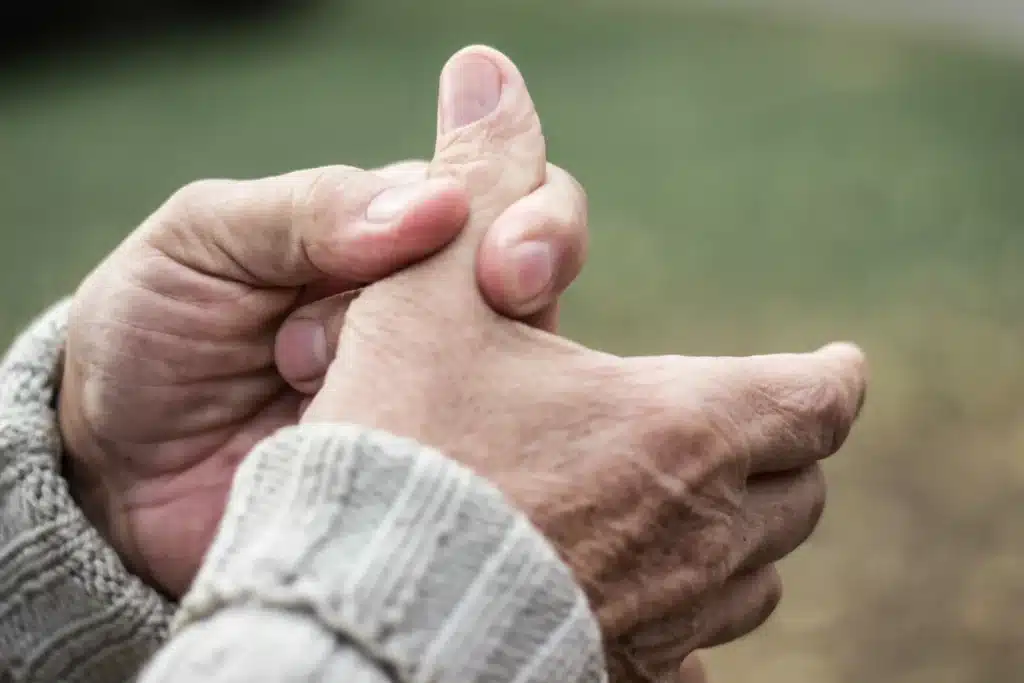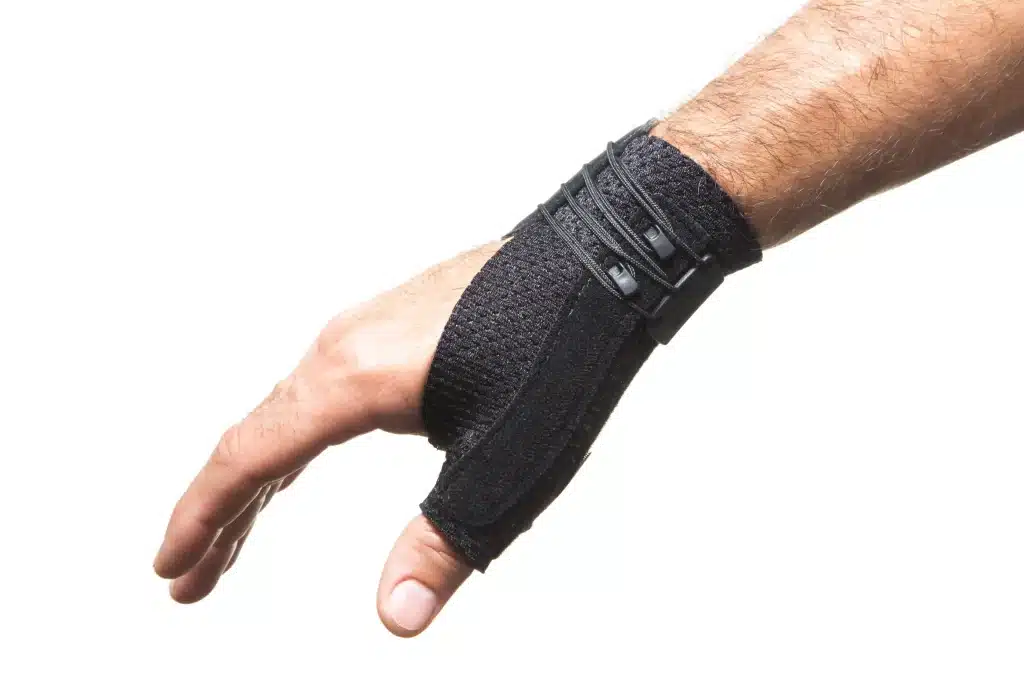Thumb Pain: Common Causes and Treatments
Having a thumb makes you relatively unique in the animal kingdom. Yet most of us take our thumbs for granted—until they cause problems. When your thumb hurts, using your hand as normal becomes surprisingly difficult. Yet, understanding why you have thumb pain and how to treat it isn’t always obvious or easy. You might have a minor soft tissue injury that will heal on its own, a chronic condition, or even broken thumb bones.
The most common conditions that can cause thumb pain include osteoarthritis, carpal tunnel syndrome, DeQuervain’s tendonitis, trigger thumb, and skier’s thumb. Learning how these conditions develop, which part of the thumb they typically affect, and which treatments are best for each can help restore the functionality of an incredibly useful joint.
Types of Pain in Thumb Joints
The location of your pain can be a helpful clue for identifying thumb pain causes.

- Thumb knuckle pain: Pain in the thumb knuckle or pain at the base of the thumb can be caused by arthritis, skier’s thumb, a sprain, carpal tunnel syndrome, or trigger thumb
- Thumb pad pain: Thumb pad pain typically indicates arthritis, carpal tunnel syndrome, or a soft tissue injury.
- Thumb and wrist pain: If both your thumb and wrist hurt, the issue could be caused by arthritis, carpal tunnel syndrome, or DeQuervain’s tenosynovitis.
Osteoarthritis
The joint at the base of the thumb is the carpometacarpal joint (CMC joint). It helps you touch the tip of your thumb to the tips of that hand’s fingers, a function called opposition. Over time, normal daily activities can cause wear and tear to the cartilage of the CMC joint. This can lead to pain, inflammation, swelling, and decreased strength and range of motion in the thumb, called osteoarthritis or degenerative joint disease.
Anyone can get arthritis in the thumb (also known as basal joint arthritis) as part of the aging process, but it can also occur earlier in life due to previous injuries. Your orthopedic hand specialist can use one or more thumb arthritis tests to determine if you have the condition. Symptoms of arthritis in the thumb joint can improve with the use of anti-inflammatory gels, over-the-counter medications, wearing a splint, activity modification, or corticosteroid injections. Surgery for thumb arthritis isn’t generally required, but this type of osteoarthritis surgery can improve quality of life if your symptoms are severe.

DeQuervain’s Tenosynovitis
DeQuervain tenosynovitis is relatively common, affecting about 1 percent of the US population each year. This type of tendon inflammation occurs when the tendons on the thumb side of the wrist become inflamed and painful. In more serious cases, a bump on the thumb may develop at its base, and you may feel like your thumb is getting caught when you move it. DeQuervain’s tenosynovitis is typically treated using anti-inflammatory medications, splinting, or steroid injections. A release surgery is sometimes necessary to relieve the condition.
Carpal Tunnel Syndrome
Carpal tunnel syndrome is generally felt in the arm or hand, with symptoms most common in the thumb, index, middle, and/or ring fingers. The condition is caused by a pinched nerve that leads to numbness and tingling that can come and go but are often worse at night. It sometimes also feels like an electric shock or burning sensation in the thumb and may also lead to weak thumb muscles.
Many people treat carpal tunnel syndrome by wearing a wrist brace during repetitive moments and at night, performing hand stretches and exercises as directed, or getting corticosteroid injections. If these conservative treatments do not lead to sufficient symptom improvement, carpal tunnel surgery is typically a very effective option.
Trigger Thumb
The tendon that helps you bend or flex your thumb is called the flexor pollicis longus (FPL). Trigger thumb or trigger finger is a condition where this tendon gets stuck due to swelling or inflammation in or around it. It generally becomes stiff and painful while also exhibiting a clicking, catching, or locking sensation.
Treating trigger thumb typically involves rest, splinting, anti-inflammatory medications, or corticosteroid injections. The condition doesn’t usually require surgery, but if symptoms are not relieved using more conservative measures, thumb surgery is typically an effective and low-risk option.
Skier’s Thumb
Skier’s thumb is one of the most common ski injuries, and it generally occurs after a fall onto an outstretched hand. The impact bends the ulnar collateral ligament (UCL) in the thumb backward or sideways, causing a sprain or tear. You can also sprain or jam your thumb when playing contact sports. If injured ligaments in the thumb don’t heal correctly, they can cause ongoing pain and weakness when grasping objects or pinching. If you have intense pain after your fall, you may have a fracture vs. a sprain.
Treatment for a minor sprained thumb often includes splinting or casting, applying a wrapped ice pack for about 10 minutes every hour, and elevating your hand above your heart. If the UCL is fully torn, surgery will likely be necessary. Post-procedure hand physical therapy will help you regain range of motion and strength as you heal from skier’s thumb.
How to Relieve Thumb Joint Pain
If you have thumb pain, it’s best to see an orthopedic hand and wrist specialist for a proper diagnosis and personalized treatment plan. They will perform a physical exam and likely take diagnostic images, such as an X-ray, MRI, or ultrasound. If you can’t move your thumb, it’s swollen or warm to the touch, or if it appears out of place, bent, or unstable, seek medical attention immediately.

To help with a sore thumb at home, try the following methods:
- Allow your thumb to rest as much as possible and avoid using that hand for repetitive activities
- Wear a compression bandage, splint, or brace to immobilize it
- Apply a wrapped ice pack to your thumb for 10 minutes every hour
- Elevate your thumb above your heart while sitting and sleeping
- Take over-the-counter anti-inflammatory medications as directed
If you have thumb pain and would like to speak with a hand specialist, please contact us or comment below.
Leave a Reply